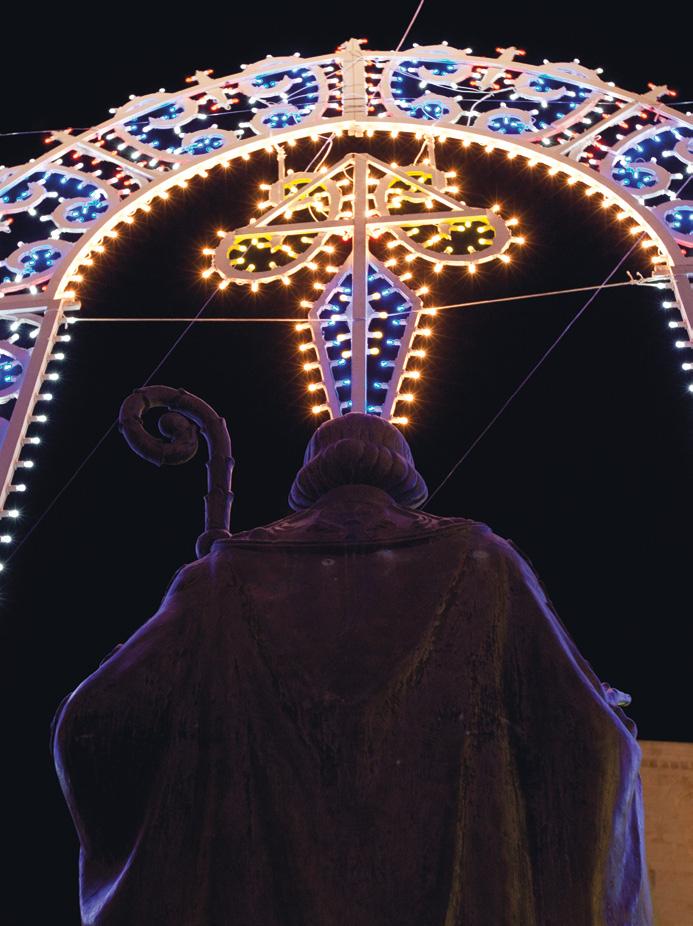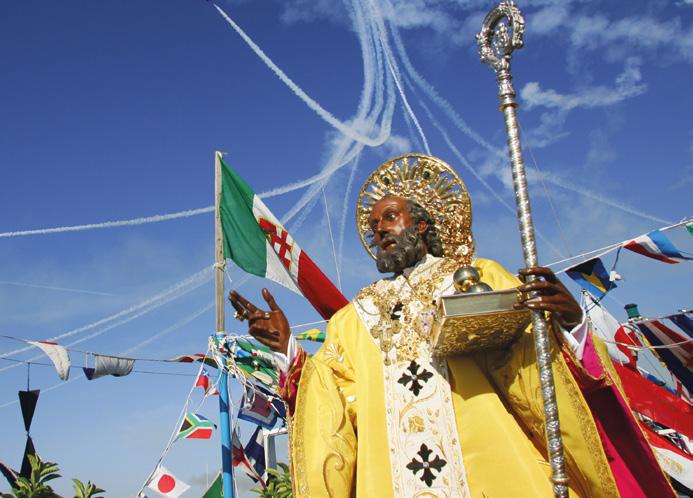
11 minute read
RITI - TRADITIONS
San Nicola, pensaci tu
Saint Nicholas, take care of us
¬ Manuela Vitulli
PER I BARESI NON È SEMPLICEMENTE UN SANTO. SAN NICOLA È FAMIGLIA, FOLCLORE, CULTO. NATO TURCO E DIVENUTO PUGLIESE GRAZIE AL ROCAMBOLESCO FURTO DELLE SUE SPOGLIE QUASI 1000 ANNI FA, SAN NICOLA È VENERATO IN TUTTO IL MONDO, MA SEMBRA PERSONIFICARE IL CARATTERE DELLA CITTÀ DI BARI, INNAMORATA DELLE ALTRE CULTURE.
For the people of Bari, Saint Nicholas is not merely a saint. He is family, folklore, a cult. Although he was born in Turkey, he became a Puglian due to the daring theft of his remains almost 1000 years ago. Saint Nicholas is revered all over the world, but he seems to personify the character and identity of the city of Bari, adores other cultures.
I miei primi ricordi legati a San Nicola profumano di cioccolata calda (quella che secondo la tradizione va bevuta all’alba del 6 dicembre, nel giorno di San Nicola) e di ’nghimiridd (gli involtini di interiora di carne che vengono preparati per strada durante la festa patronale, dal 7 al 9 maggio). Ma soprattutto, i miei ricordi sanno di famiglia. Quand’ero piccola, i
tre giorni di Festa, a maggio, erano il collante che teneva assieme zii, nonni
e nipoti: un pretesto per ritrovarsi sulla Muraglia di Bari Vecchia ad ammirare - io e i miei cuginetti rigorosamente col naso all’insù e la bocca spalancata - il tanto atteso spettacolo pirotecnico. Un tripudio di luci e colori nel cielo decretava che sì, l’intera città di Bari era decisamente in festa. Penso che non ci sia barese che non abbia un ricordo di questo tipo legato a San Nicola, capace di scaldargli il cuore.
Nel corso dei secoli il culto di San Nicola, vescovo di Myra, si è radicato nella cultura di quasi ogni Paese del mondo. Noi baresi siamo talmente orgogliosi di conservare le spoglie di un santo così amato e venerato, che arriviamo al punto di identificarci con lui. Lo spiega bene il detto “Le barise so’ come a Sanda Nicole: so amande de le frastejiere“ ovvero “I baresi sono come San Nicola: amano gli stranieri“. Ed è vero. Amiamo mescolarci ad altre culture, sentire i suoni e gli accenti di altri idiomi passeggiando tra i vicoli di Bari Vecchia. È musica per le nostre orecchie.
D’altronde, era già scritto nella storia della città. Bari è ponte tra Oriente e
Occidente, crogiuolo di civiltà, culture e religioni diverse. Dove possono coesistere felicemente la Basilica e la Chiesa Russa Ortodossa, entrambe
dedicate a San Nicola. Quest’ultima - da inserire in un itinerario alla scoperta di una Bari meno classica - mi ha sempre ammaliato con le sue cupole “a cipolla“ verdi dalla inconfondibile influenza orientale. Quando la loro sagoma si staglia contro il cielo azzurro, è un attimo che pur trovandosi a Bari ci si sente catapultati in Oriente, avvolti dal profumo dell’incenso ortodosso e ammaliati dai canti religiosi russi. Poi, basta infilarsi nel dedalo di vicoli di Bari Vecchia per passare da una cultura all’altra e ritrovarsi dinanzi all’imponente e meravigliosa Basilica di San Nicola, la più antica chiesa della città in puro stile romanico-pugliese. È letteralmente un tempio, antichissimo ma ancora giovane nella elegante architettura e nella svettante mole, protesa verso il cielo e specchiantesi nel mare.
Continua >
My first memories of St. Nicholas Day include the delicious smell of hot chocolate (which according to tradition should be drunk at dawn on December 6th, Saint Nicholas Day) and of “nghimiridd“ (stuffed rolls made from giblets prepared during the Feast of the Patron Saint which takes place from 7th to 9th May). But more than anything else, my main memories are those involving my family. When I was little, the three days of
celebrations in May, were a type of glue that kept uncles and aunts, grandparents
and grandchildren all together. It was an excuse for me and my cousins to climb up and sit on the “Muraglia di Bari Vecchia“ (the ancient wall which surrounded and protected the city) and admire the longawaited fireworks display with our eyes to the sky and our mouths agape. The bursts of lights and colours in the sky confirmed that the entire city of Bari was most definitely in festive mode. I don’t think that there is a single Bari native who does not have a heart-warming memory of this kind associated to St. Nicholas. Over the centuries, a devotion to St. Nicholas, bishop of Myra, has spread to almost every country in the world. Those of us from Bari are extremely proud to possess and guard the remains of a much beloved and worshipped saint, to such an extent that we are even able to identify with him. This sentiment comes across clearly in the saying “Le barise so’ come a Sanda Nicole: so amande de le frastejiere“ which translates as “The people of Bari are like St. Nicholas: they love foreigners“. And this is so true. We love to mix with other cultures, to hear other languages being spoken while walking through the narrow streets of Bari’s Old Town. It is music to our ears.
The city’s history actually shows that multiculturism is nothing new to Bari.
The city connects the East to the West and has always been a melting pot of different communities, cultures and religions. A place where the Basilica and the Russian Orthodox Church, both dedicated to St. Nicholas, can happily
coexist. The latter (a highly recommended stop for anyone wishing to explore a less traditional Bari) has always fascinated me with its green “onion“ domes which boast an unmistakable oriental influence. When their silhouette dazzles against the blue sky, in that moment even though you’re in Bari, you can’t help but feel catapulted into the East, surrounded by the scent of Orthodox incense and enchanted by Russian religious songs. Afterwards, in order to switch from one culture to another, all you have to do is wander the maze of narrow streets in Bari Vecchia (the Old Town) and you will find yourself in front of the imposing and wonderful Basilica of Saint Nicholas, the oldest church in the city built in pure PuglianRomanesque style. It is an ancient temple but still young in terms of its elegant architecture and towering size. It stretches upwards towards the sky and is located near the sea.
Continues >
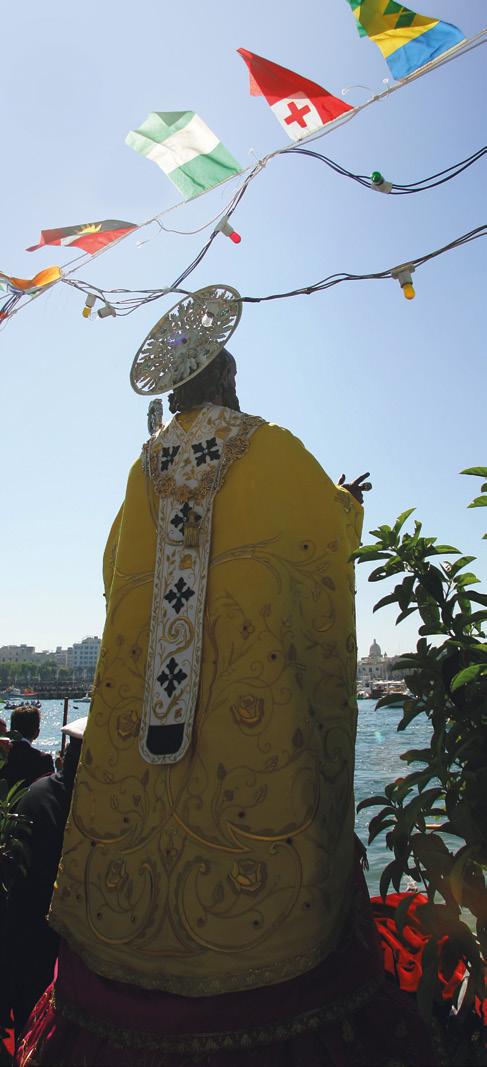
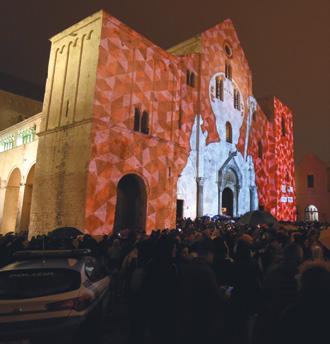
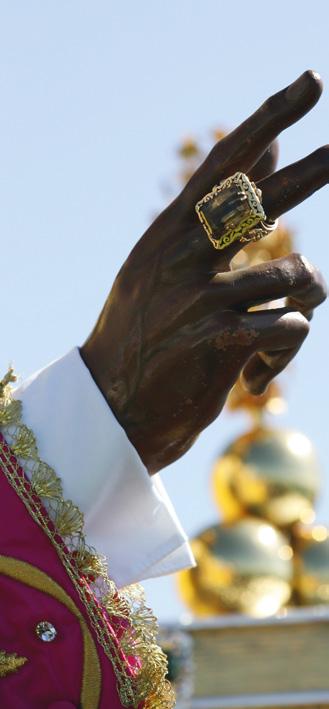
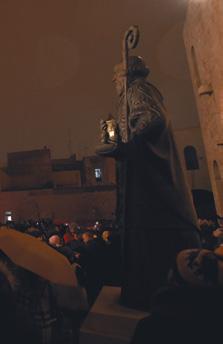
E proprio dal mare, nella notte dell’8 maggio 1087, giunsero le ossa di San Nicola trafugate da 47 audaci marinai baresi e da due monaci benedettini.
I quali fecero voto di far innalzare un maestoso tempio in cui sarebbero stati degnamente venerati i resti del grande Santo trovati immersi in un liquido miracoloso, la Sacra Manna. Fu così che nacque la Basilica. E fu così che San Nicola di Myra, nato turco, divenne pugliese, parte integrante della cultura barese. Al punto tale che oggi Bari è la capitale universale del culto nicolaiano, meta di devoti pellegrinaggi e custode di riti popolari che si tramandano di generazione in generazione. Ve ne racconto alcuni.
Si narra che San Nicola da Vescovo resuscitò tre bambini che erano stati uccisi da un oste. In virtù di questo miracolo, San Nicola è divenuto prima il Santo dei bambini e poi Santa Claus - il nostro Babbo Natale. Ed è sempre per un miracolo che, secondo la tradizione, San Nicola aiuterebbe le donne nubili (noi baresi diciamo “le zitelle“) a trovare marito. Un miracolo che avrebbe compiuto da giovane per aiutare un uomo che si era giocato tutte le sue ricchezze e non poteva acquistare la dote alle tre figlie, col rischio di farle prostituire. Quindi San Nicola per tre notti avrebbe buttato nella casa di quest’uomo tre borse d’oro, in modo da poter assicurare la dote alle fanciulle.
Questo è anche il motivo per cui San Nicola viene raffigurato con tre sfere, che nella versione popolare ricordano il miracolo delle tre donzelle, mentre in quella teologica vogliono rappresentare Fede, Speranza e Carità. Con questo miracolo San Nicola diventa il Santo delle “donne in cerca di marito“ e così
in occasione del 6 dicembre, giorno dell’onomastico e della morte del Santo, la tradizione popolare vuole che le “donne in cerca di marito“ vadano alla
prima messa, quella celebrata alle cinque del mattino, e subito dopo facciano tre giri (tre, come le tre sfere) attorno alla “colonna miracolosa“ situata in cripta.
And it is from the sea that the bones of St. Nicholas arrived on the night of 8th May 1087, having been stolen by 47 daring sailors from Bari and two Benedictine
monks. They vowed to have a majestic temple erected where people could go to worship the remains of the great Saint, found immersed in a miraculous liquid, the Sacred Manna. And so it was that the Basilica was built. And in turn, St. Nicholas of Myra, born in Turkey, became a Puglian, an integral part of the culture in Bari. Today, Bari is the world capital for St. Nicholas devotees. It’s a destination for loyal pilgrims and the guardian of traditional customs that have been handed down from generation to generation. Let me tell you about some of them.
It is said that when St. Nicholas was a bishop, he resurrected three children who had been killed by an innkeeper. By virtue of this miracle, St. Nicholas first became the Saint of children and then Santa Claus. It is believed that St. Nicholas would perform miracles to help the “zitelle“ (single women) find a husband. One such miracle that a young St. Nicholas is believed to have performed when he helped a man who had gambled away all his wealth and was unable to pay the dowries for his three daughters, thereby risking them being forced into prostitution. For three nights, St. Nicholas threw three bags of gold into this man’s house, so that the father could afford his daughters’ dowries.
This is also the reason why St. Nicholas is depicted with three spheres. Some say that the spheres represent the miracle of the three maidens, while others have a more theological thinking and believe that they represent Faith, Hope and Charity. Due to this miracle of the three daughters, St. Nicholas became the Saint of “women in search of a husband“ and so tradition has it that on 6th December, St. Nicholas Day and the date of his death, “women in search of a husband“ go to the first Mass of the day, the one celebrated at five o’clock in the morning, and immediately afterwards they walk around the “miraculous column“ located in the crypt three times (three, like the three spheres).
Continua > Continues >
¬ Photo Credits Tesser-Piscitelli & Rocco De Benedictis E tante donne il marito lo trovavano davvero, perché sul posto non andavano solo le donne, ma anche gli uomini in cerca di mogli. Da quando la colonna è stata protetta con una grata, questa pratica è stata interrotta. Tuttavia, si è trovato subito un escamotage e i tre giri intorno alla colonna sono stati sostituiti da preghiere scritte su bigliettini inseriti all’interno della grata.
A chi non è di Bari e desidera sentirsi parte di questo culto, consiglio vivamente la levataccia la mattina del 6 dicembre per poter assistere alla prima celebrazione in Basilica, per poi fare colazione - come da tradizione - con una tazza di cioccolata calda tra i vicoli del borgo antico, insieme a pettole, sgagliozze e dolci natalizi.
Io trovo che sia estremamente affascinante il profondo senso di devozione che lega i baresi a questo santo. Sacro e profano
si fondono a tal punto che tutto quel che riguarda San Nicola sembra essere
avvolto da un alone di magia. È un fenomeno inspiegabile ed è per questo che l’unico consiglio che posso dare è di viverlo. Indeed, many women have found their husbands this way, not only because women go to this place, but also men go there in search of wives. However, since the column has been surrounded by a metal frame, this practice has ceased, but a solution was found immediately: the three laps around the column have been replaced by prayers written on cards inserted inside the metal frame.
For those who are not from Bari and want to feel part of this ritual, I highly recommend getting up early on the morning of 6th December in order to be able to attend the first Mass in the Basilica, and then to have breakfast as tradition dictates: a cup of hot chocolate in the narrow streets of the old quarter, savoured with pettole and sgagliozze (traditional savoury and fried street-food), as well as typical Christmas pastries.
I find it extremely fascinating that there is a profound sense of devotion that unites the people of Bari to this saint. Everything
about St. Nicholas seems to be enveloped
in an aura of magic and mystic. It is an inexplicable phenomenon and that is why the only advice I can give to you is to go and experience it for yourself.
